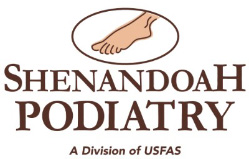 It’s understandable that parents may have concerns about their children’s feet. One problem that you may see is flat feet. It’s also called flat foot, pes planus, or fallen arches. This is a common podiatry problem in kids.
It’s understandable that parents may have concerns about their children’s feet. One problem that you may see is flat feet. It’s also called flat foot, pes planus, or fallen arches. This is a common podiatry problem in kids.
The reality is that it’s quite normal for very young children to have flat feet. If you’ve ever looked at a baby’s foot, they have a fat pad where a foot arch normally is. As they gain mobility, this fat pad gets absorbed into the foot during the toddler and early childhood years. By age five or six, most children will have developed a normal, healthy arch in their feet. But not all children do.
Flat feet can not only be painful, but they can also lead to more serious issues down the line. It is important to seek the advice of an experienced foot doctor to assess your children’s feet.
What Are Flat Feet?
The term flat feet literally describes what the condition is. With flat feet in children, one or both feet have little to no arch. When someone with a flat foot stands, the entire sole of their foot touches the ground. Normally, the arch on the inside mid-foot is elevated from the ground. A flat foot is the literal opposite of high arches.
Flat feet in young children aren’t necessarily worrisome, but they are something you want to get checked. Flat feet interfere with mobility and normal physical development. If the arches never form, a child may grow up to experience other podiatric problems.
There are two main types of flat feet:
- Flexible flat foot. A flexible flat foot is when the foot has no arch when standing, but an arch is visible when the feet are hanging down freely. You may also see an arch when the child stands on their tiptoes.
- Rigid flat foot. A rigid flat foot remains flat regardless of position. If the child allows their feet to hang freely and no arch is visible, they may have a rigid flat foot.
A rigid flat foot can be more problematic than a flexible flat foot. The former often needs treatment. The latter may only need to be monitored. About one in five children have flat feet.
Common Symptoms of Flat Feet
It is important to take the time to inspect your children’s feet and look for common symptoms of flat feet. Some signs of flat feet include:
- Chronic pain, fatigue, or aching in the feet or legs
- Pain when walking or being active
- Sore heels
- Discomfort in the knees and ankles
- Frequent leg cramps
- Complaining about tired feet
- Tightness in calf muscles
- Poor stability in knees and hips
- Hypermobility in foot and ankle ligaments
- Changes in their gait
- Walking with their toes pointed outward (toe drift)
Possible Complications of Flat Feet
Children with flat feet may also experience possible complications. Some complications that children with flat feet may experience include:
- Difficulty running or participating in sports
- Tripping and falling frequently
- Reluctance or inability to play with their peers
- An awkward gait
- Prone to sports injuries
- Asking to be carried a lot
- Slower than their peers at physical activity
- Increased clumsiness
- Significant “rolling in” of their feet
Available Treatments for Pediatric Flat Feet
In mild cases, the child may only need to be monitored. Many children outgrow flat feet, so direct treatment may not be unnecessary. However, sometimes treatment is necessary. Possible treatments for flat feet in children may include:
- Custom orthotic inserts to correct foot form
- Over-the-counter medicine for pain relief
- Physical therapy and stretching
- Selecting children’s shoes with more arch support
- Exercises that strengthen and stretch tight muscles and weak areas
- Physiotherapy
- Other pain management options
It's important to watch closely for foot problems—especially in children. By detecting and treating problems early, you can encourage normal development to continue. At Shenandoah Podiatry, we are committed to ensuring your child has access to the care they need for a lifetime of healthy feet. From inward-pointing toes to flat feet, we’ve seen it all.
